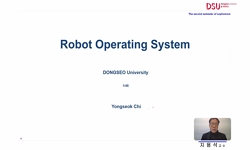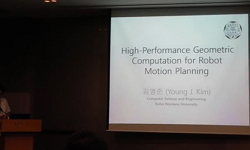This study presents an example of creating and optimizing a task sequence required in an automated remote dismantling system using a digital manufacturing system. An automated remote dismantling system using a robotic arm has recently been widely stud...
http://chineseinput.net/에서 pinyin(병음)방식으로 중국어를 변환할 수 있습니다.
변환된 중국어를 복사하여 사용하시면 됩니다.
- 中文 을 입력하시려면 zhongwen을 입력하시고 space를누르시면됩니다.
- 北京 을 입력하시려면 beijing을 입력하시고 space를 누르시면 됩니다.
Study on Creating and Optimizing a Task Sequence for Robotic Underwater Laser Cutting Using a Digital Manufacturing System
한글로보기https://www.riss.kr/link?id=A108958298
- 저자
- 발행기관
- 학술지명
- 권호사항
-
발행연도
2022
-
작성언어
English
- 주제어
-
KDC
559
-
자료형태
학술저널
-
수록면
353-353(1쪽)
- 제공처
-
0
상세조회 -
0
다운로드
부가정보
다국어 초록 (Multilingual Abstract)
This study presents an example of creating and optimizing a task sequence required in an automated remote dismantling system using a digital manufacturing system. An automated remote dismantling system using a robotic arm has recently been widely studied to improve the efficiency and safety of the dismantling operations. The task sequence must be verified in advance through discrete eventbased process simulation in a digital manufacturing system to avoid problems in actual remote cutting operations as the main input of the automated remote dismantling system. The laser cutting method can precisely cut complicated target structures such as reactor internals with versatility, but a robot and a pre-prepared program are required to deploy sophisticated motion of the laser cutting head on the target structure. For safe and efficient dismantling operations, the robot’s program must be verified in advance in a virtual environment that can represent the actual dismantling site. This study presents creating and optimizing the task sequence of a robotic underwater laser cutting as part of the project of developing an automated remote dismantling system. A task sequence is created to implement the desired cutting path for the target structure using the automated remote dismantling system in the virtual environment. The task sequence is optimized for the posture of the laser cutting head and the robot to avoid collisions during the operation through discrete event-based process simulation since the target structure is complicated and the volume occupied by the laser cutting head and the robot arm is considerably large. The task sequence verified in the digital manufacturing system is demonstrated by experiments cutting the target structure along the desired cutting path without any problems. The various simulation cases presented in this study are expected to contribute not only to the development of the automated remote dismantling system, but also to the establishment of a safe and efficient dismantling process in the nuclear facility decommissioning.
동일학술지(권/호) 다른 논문
-
- 한국방사성폐기물학회
- Seong-Kyu Ahn
- 2022
-
An Analysis on Security Activities of the NuScale Standard Design Review
- 한국방사성폐기물학회
- Kookheui Kwon
- 2022
-
A Review on the DBT and Nuclear Damage Compensation Act
- 한국방사성폐기물학회
- Sangcheol Hyung
- 2022
-
A Study on the Analysis of Design Features of SMART to Apply Safeguards-By-Design
- 한국방사성폐기물학회
- Joo Hyung Moon
- 2022




 코리아스칼라
코리아스칼라





